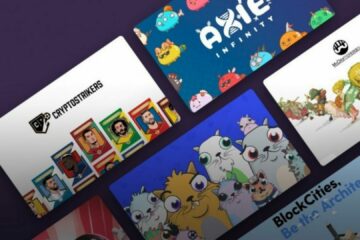What is the NFT frenzy? Here are some astute observations from the experts:
NFTs enabled a provable digital scarcity that no one could violate and inherently gave all ownership and transfer rights to the owners of NFTs. Forming an emotional attachment to anything doesn’t have to be based on visual fidelity or anything else tangible. The value attached to non-fungible tokens goes beyond simple images or blockchain-based content.
Since the start of the year, interest in the NFT market has increased significantly. There is no sign of slowing down anytime soon, given the new concepts introduced into space. Analysts have speculated that Fractionalized NFTs will generate more returns than cryptocurrency in the future, leading Fractional NFTs and Metaverse.
The past nine months have been spectacular for the crypto arts world. As people realized the true value and applicability of non-fungible tokens (NFTs), the market for these unique blockchain data units became immensely popular. Should we dive for NFTs? These measures proposed by pseudonymous $ 7.5 million CryptoPunk buyer Peruggia need some personal reflection:
How big is the global demand for rare assets? What is the probability that in the future the most valuable assets will be digital? What is the probability that the first NFTs will be considered the rarest?
Looking at the cryptocurrency space, I think the NFT space will produce and merge with the wealthiest people on the planet. You might be wondering why, but find out why not? The distribution of NFTs is incredibly fair and Cryptopunks are rarer than Bitcoin. Very little faith in innovation would help you conclude that DFTs will be more valued in the future.
$ 20-30 billion combined with primary sales
For the record, total NFT secondary market sales recently passed the $ 10 billion mark and around $ 20 billion to $ 30 billion in combined primary sales, according to research analyst Messari Mason Nystrom. These data indicate the growing level of investor interest and appetite for Fractionalized NFTs.
The majority of sales have been generated by collectible crypto arts, particularly Cryptopunk. Punks have been around for over four years now, but they only gained attention this year due to increased interest in the general NFT market. Matt Hall and John Watkinson started this collection of 24 × 24, 8-bit style pixel art images on an experimental basis, but it quickly paved the way for the CryptoArt market.
Surprisingly, only a few people paid attention to these highly sought-after crypto arts when they were released to the public in 2017. During this time, only 20-30 Cryptopunks were purchased after the first week of launch, even though they were less. expensive than value today. The answer was probably because a lot of people knew less about or cared about Cryptopunk’s potential. At the time, most of the attention on NFTs was directed to the Cryptokitties. However, things changed following the publication of Mashable’s article titled “This Ethereum-Based Project Could Change The Way We Think About Digital Art.”
Fast forward to the present; Most of the Cryptopunk content has sold for hundreds of thousands of sales, many for over $ 1 million and $ 10 million just as a result of interest in the NFT market. This trend is a win for early stage investors who bought characters from the exact 10,000 Cryptopunk Arts. Looking at the price today, unfortunately, Cryptopunk seems out of reach for many, especially retail investors.
The NFTs market continues to grow
If you failed to get your hands on any of the characters before the NFT market frenzy, you sadly missed out on a huge profit opportunity in Cryptopunk. However, there is speculation that Cryptopunk will be worth much more in the years to come.
Here are some reasons why the NFTs market will continue to grow
Rarity: The cryptocurrency market, especially Bitcoin, is also driven by the suspense of scarcity. More people are drawn to the largest asset by market capitalization; Given the fact, there will only be 21 million BTC in existence. This is also applicable to other cryptocurrencies, and NFTs are no exception. Cryptographic arts are not fungible and represent the rarest asset. Considering the monetary value of Leonardo da Vinci’s Mona Lisa painting as the rarest asset, don’t you think NFTs will tap the growing demand for rare works of art given the transition world into the digital age.
“I think the NFTs are going to work. Each art is marketed and monetized; why wouldn’t GIF / interactive / digital art do it? NFTs are the only medium for this. There is no other decentralized way to achieve this; I have no doubt that NFTs are the future of digital art, ”said Sutan, Spanish curator and collector of NFT.
Value and Interest: People will continue to invest in NFTs because of their core value and concept. A lot of people love the arts, trading cards, and other collectibles, although these things can be replicated. They buy these physical items not because they are cheaper than others, but because they care about them and appreciate their value. Don’t you see the trend towards NFTs in the future, as NFTs have much more value to offer? Managing authenticity and proving ownership of NFTs in a decentralized manner has been unthinkable before. We recently published an article detailing the importance of NFTs and why most are worth so much.
Metaverse: The applicability of NFTs in the metaverse will open up more intriguing opportunities among crypto users. Metaverse is a relatively new concept that refers to an enhanced augmented reality environment on the internet where people can interact with digital assets, potentially including NFTs that add utility to them. This article also discussed how DFTs fit into a revenue model in the emerging metaverse space, extending their utility and value.
Soon more innovations and interesting projects will skyrocket in value more than the numbers Cryptopunk could make before. Already some of these new opportunities are here. As always, however, they are negligible as people barely pay attention until the prices skyrocket.
Fractional NFTs Soar
Fractional NFTs will be one of the next big trends in the cryptocurrency industry, particularly the B20 token or tokenized fractions of 20 digital works of art created by popular digital artist and American NFT Beeple.
To split NFTs, owners lock the main content in a smart contract. Then, they issue two or more tokens that represent the value of the content when combined. This concept would have started with the B.20 project, still relatively new to the non-fungible token market. This pattern was used by PleasrDAO to resell the official Dogecoin NFT meme in tokens.
Among other things, splitting an NFT decentralizes ownership and allows for greater discovery and affordability. Since the value is divided into tokens, more people will be able to afford and speculate on the price instead of expensive NFT content from Beeple or even Cryptopunk.
Notably, the perception that fractional NFTs divide the crypto arts is not that useful and detailed. More people will likely follow this market if the narrative can be changed slightly to mean “altcoins by NFT”. We cannot ignore the fact that some people are unfamiliar and insensitive to the crypto-art thing. However, they can go all the way if it is cryptocurrency, which they understand.



0 Comments